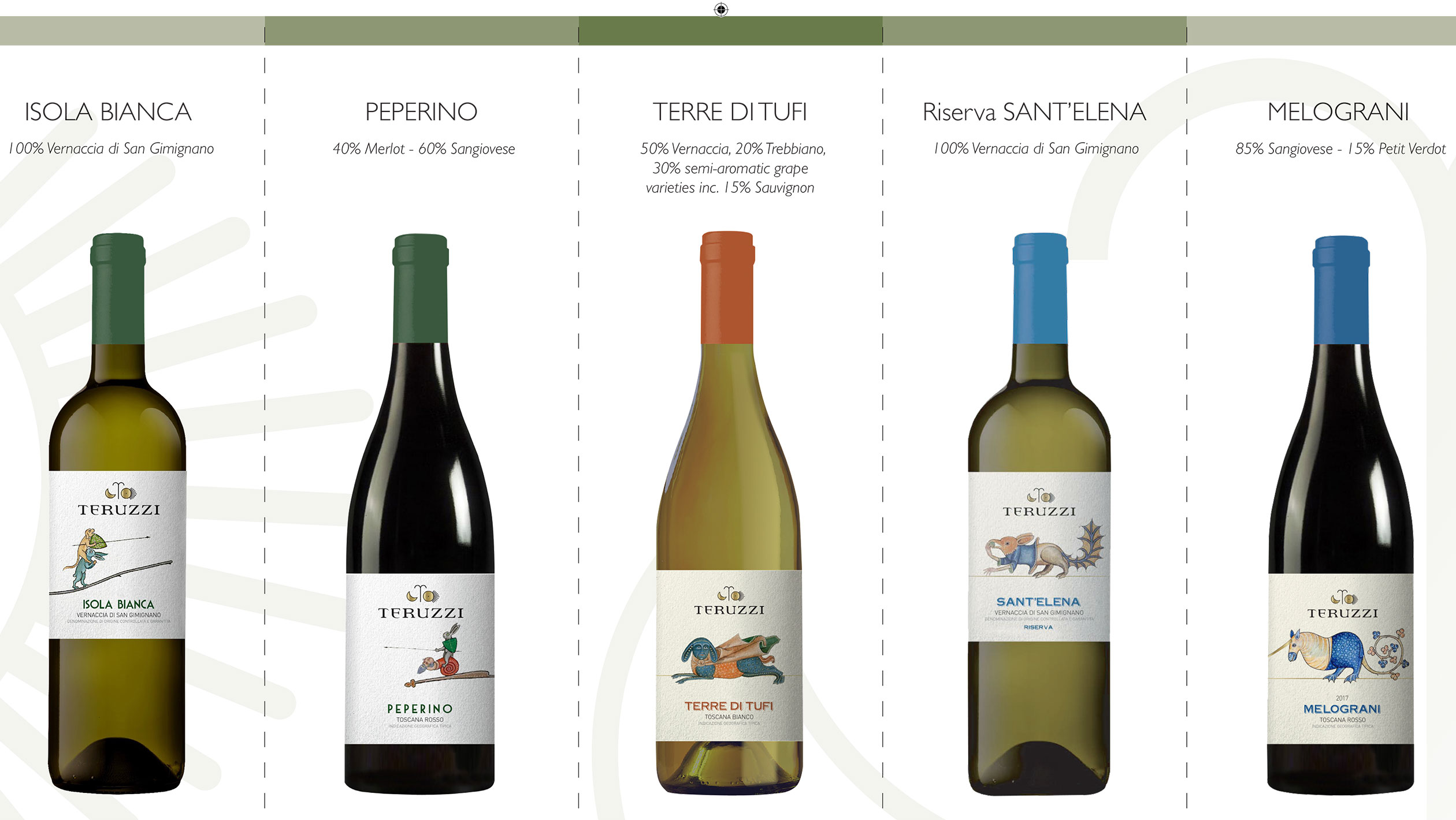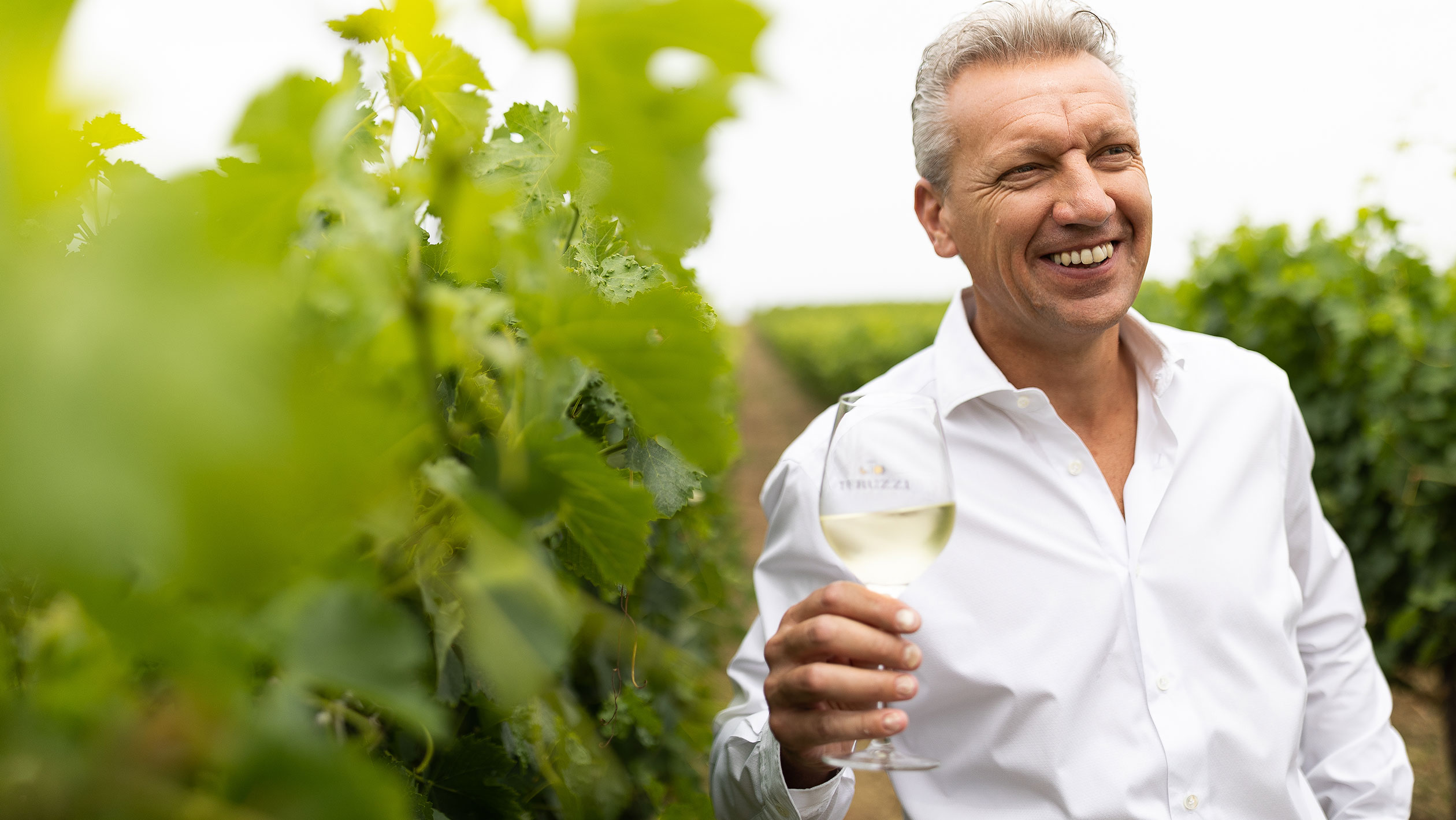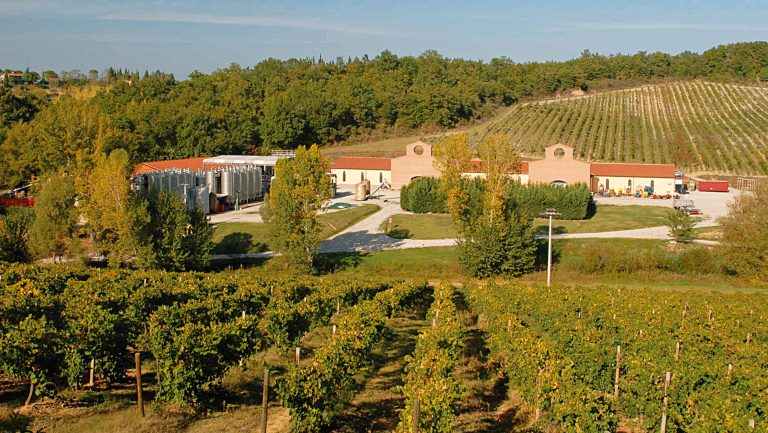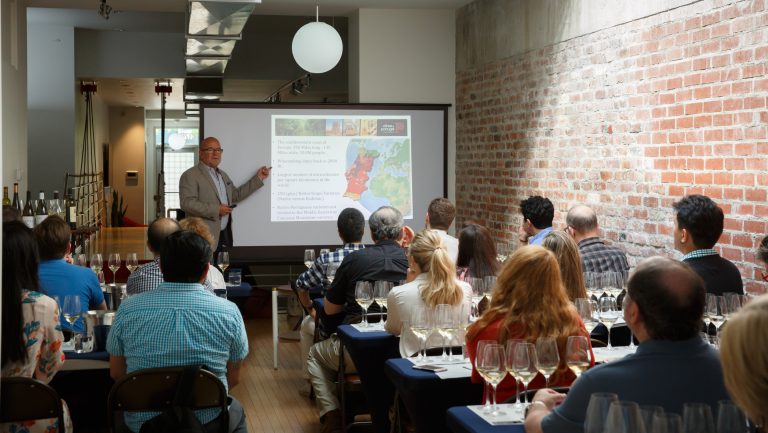This advertising content was produced in collaboration with our partner, Teruzzi Wine.
When the Tuscan producer Teruzzi was founded in 1974, no one knew how significant the winery would one day become in Italy’s sustainability movement. It began focusing on more sustainable ways to grow their grapes and produce their highly sought-after wine a decade ago. During that time—and especially following the 2016 takeover of the estate by Terra Moretti, which turbocharged their social and environmental sustainability efforts—Teruzzi has become a leader among Tuscany’s growing number of producers focused on the environmental and societal impact of their work.
Located not far from Siena in the ancient town of San Gimignano, Teruzzi has always been built on the dual goals of respecting the past and looking toward the future. Indeed, they are among the most respected and well-distributed producers of Vernaccia di San Gimignano in the region. Teruzzi has dedicated 96 of their 180 hectares of land to vineyards, and the high quality and scale of their production has meant their sustainability efforts have had an outsized impact on the region.
Given the increasingly dire impact of climate change on the vineyard and beyond, producers like Teruzzi are positioned to lead the way into the future. “It’s been a decade since I started cultivating the vineyards with this mentality,” says Gragnoli. “Every year, I can see an improvement.”

Don’t miss the latest drinks industry news and insights. Sign up for our award-winning newsletters and get insider intel, resources, and trends delivered to your inbox every week.
Searching for a More Sustainable Model of Viticulture
In 2022, Teruzzi became one of a small percentage of producers in Italy to be certified by Equalitas. Among the most rigorous of the world’s sustainability bodies, Equalitas considers the entirety of a producer’s operation on the path to certification. For example, water, soil, and lichen biodiversity are assessed; water and carbon footprints are analyzed; and agricultural, winery, and even bottling practices are scrutinized. Worker development plans are also crucial. The list goes on, which is why pursuing the Equalitas certification is such an undertaking.
For Teruzzi, the move made sense. “The importance of sustainability certifications is that it fully respects procedures and goals that the certifying institution requires to get the certification,” says Alessio Gragnoli, the general director of Teruzzi. “It is a hallmark stating that the winery has obtained it because it is [100 percent committed].”
Equalitas, in particular, is necessarily difficult to earn. “Not all wineries are able to obtain this kind of certification,” says Gragnoli. “Equalitas is a certification that has fundamental and different requirements, from the environmental and social to the economic side of the company.”
In that regard, earning Equalitas certification wasn’t simply the responsibility of a handful of key people; it was, rather, the result of a dedication by the entire organization, across every member of the team, over the course of years. “All the employees have a specific role to obtain the goals,” says Gragnoli.

Teruzzi’s Approach on the Vineyard
To convey the inherent character of the region and the vineyard, and yield the most expressive wines, Teruzzi focuses on growing its grapes in the most honest manner. The moderate, sub-Mediterranean climate around San Gimignano is perfect for grape production, and conducive to cutting back on chemical inputs. Well-drained soils of tufa and yellow and blue clay dating back to the marine deposits of the Pliocene, as well as limestone, impart a telltale savory quality to the wines. Expressing this natural characteristic is key to Teruzzi’s work.
To accomplish this, and as part of their certification efforts, the Teruzzi team employs a farming method known as atomizzatori da recupero, which translates as ‘recovering vaporizers or sprayers.’ These, Gragnoli explains, allow Teruzzi to save approximately 50 percent of their water. Given the unpredictable nature of how climate change manifests in any given year—extreme rain or severe drought, too much heat or not nearly enough, and so on—conserving water is both better for the environment as well as for the vines themselves. It forces the root systems to tie themselves more deeply to the underlying terroir, which in turn results not just in heartier vines, but in more characterful wines as well.
Gragnoli also takes a technological approach to treating the vines. “I use software that’s connected to our control unit in the vineyards,” he says. “Thanks to it, I can understand the best moment to start treatments. In this way, we are effective against illnesses.” This resistance is built by assisting the vines when conditions require it, but doing so only when it’s necessary.
“Moreover, we have practiced the sovescio technique, [or] green manuring, on the entire cultivated area for the past 10 years,” he says, referring to the practice of planting cover crops that are ultimately plowed back into the soil while they’re still green. The subsequent addition of organic matter to the land, and the benefit to the wine, is significant.

Teruzzi’s Terroir-Driven Portfolio
The investment in time and effort has paid off in the bottle. Teruzzi produces five individual wines, and each of them has become a standout in its category. The ‘Isola Bianca’ Vernaccia di San Gimignano DOCG, for example, is a benchmark white produced from a rigorous selection of grapes grown in the key zones of Racciano and Ponte Rondolino. Vintage after vintage of this textbook Vernaccia di San Gimignano is a mineral, mouthwatering, and balanced white. Its citrus fruit finds a perfect counterpart in flowers and more savory notes.
As the team’s sustainability practices grow and become more ingrained, the wine keeps improving. “Our wines [evolve] in finesse and elegance, reflecting the characteristics of the territory where Vernaccia di San Gimignano has been cultivated for more than one thousand years,” says Gragnoli.
Teruzzi’s ‘Terre di Tufi’ IGT, on the other hand, showcases a different side of Tuscany. The blend of Vernaccia di San Gimignano, Trebbiano, and other varieties can be considered the white equivalent to a Super Tuscan. It benefits from time spent in stainless steel, tonneau, and used barriques (in order to not overwhelm the inherent character of the terroir with wood), and it shines with the best of what Tuscan white wines are capable of.
Now that Teruzzi is a full decade into its sustainability efforts, the work is paying off across its portfolio. Whether it’s Teruzzi’s Toscana rossos (they produce two different ones, the Peperino and the Melograni) or their three whites, the quality and ties to the land itself keep getting more profound. And in the process, the most important goal of all is being achieved. As Gragnoli says, “We all have children, and we must leave them a better world than the one we’ve found. If everyone does something, we can achieve that goal.”

Dispatch
Sign up for our award-winning newsletter
Don’t miss the latest drinks industry news and insights—delivered to your inbox every week.








